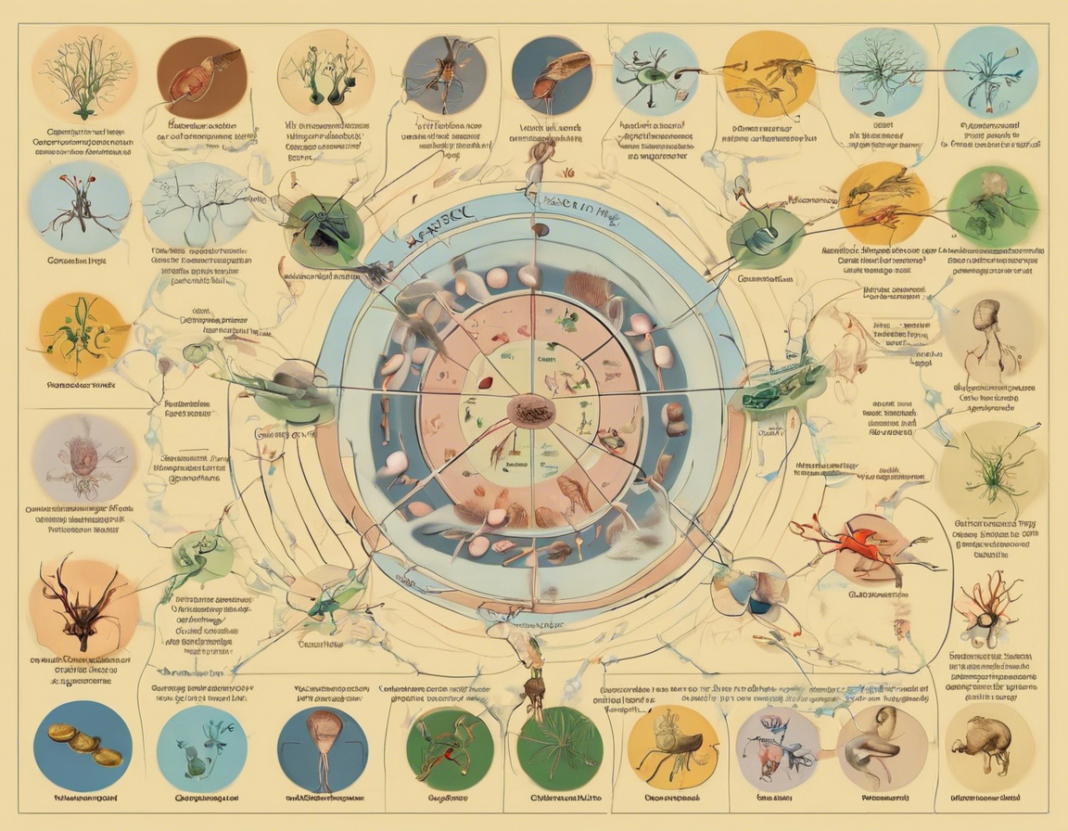Introduction
Control and coordination are vital functions in all living organisms, from the simplest single-celled bacteria to complex multicellular organisms like humans. These processes ensure that the various organs and systems within an organism work together harmoniously to maintain homeostasis and respond effectively to changes in the internal and external environment. In this article, we will delve into the significance of control and coordination in organisms, exploring the mechanisms involved and their implications for overall health and well-being.
Importance of Control and Coordination
1. Regulation of Physiological Functions
One of the primary roles of control and coordination in organisms is to regulate various physiological functions. This includes processes such as metabolism, respiration, circulation, and reproduction, among others. Through intricate signaling pathways and feedback mechanisms, organisms are able to maintain optimal levels of essential substances like glucose, oxygen, hormones, and neurotransmitters. Any disruption in these regulatory mechanisms can lead to dysfunction and disease.
2. Response to Stimuli
Control and coordination enable organisms to respond to both internal and external stimuli in a coordinated manner. For example, when a human touches a hot object, sensory receptors in the skin send signals to the brain, which then triggers a reflex action to withdraw the hand. This rapid response is crucial for survival and protection from potential harm.
3. Maintenance of Homeostasis
Homeostasis refers to the ability of an organism to maintain internal stability despite external fluctuations. Control and coordination play a key role in this process by regulating parameters such as temperature, pH, blood pressure, and nutrient levels within narrow ranges. Failure to maintain homeostasis can lead to illness and organ failure.
4. Growth and Development
Control and coordination mechanisms are essential for coordinating growth and development processes in organisms. Hormones like insulin and growth hormone regulate cell division, tissue differentiation, and overall growth. Coordination between different organ systems is critical for normal development from embryo to adulthood.
5. Movement and Locomotion
In animals, control and coordination are responsible for movement and locomotion. The nervous system coordinates muscle contractions and relaxations to produce precise movements, while the skeletal system provides structural support and leverage. Without proper control and coordination, movements would be uncoordinated and inefficient.
6. Reproduction and Sexual Differentiation
In sexually reproducing organisms, control and coordination are crucial for reproductive success. Hormones like estrogen and testosterone regulate the development of reproductive organs and secondary sexual characteristics. Coordination between the nervous system and the endocrine system is essential for the timing and success of reproductive events.
Mechanisms of Control and Coordination
1. Nervous System
The nervous system plays a central role in control and coordination in multicellular organisms. It consists of the central nervous system (CNS), which includes the brain and spinal cord, and the peripheral nervous system, which includes nerves that connect the CNS to the rest of the body. Through the transmission of electrochemical signals, the nervous system coordinates sensory input, integration of information, and motor output.
2. Endocrine System
The endocrine system works in conjunction with the nervous system to regulate various physiological processes through the secretion of hormones. Hormones are chemical messengers that travel through the bloodstream to target organs, where they elicit specific responses. The endocrine system helps maintain homeostasis, regulate growth and development, and coordinate reproduction.
3. Cell Signaling Pathways
At the cellular level, control and coordination are mediated by cell signaling pathways. Cells communicate with each other through various signaling molecules, such as neurotransmitters, cytokines, and growth factors. These molecules bind to specific receptors on target cells, triggering a cascade of intracellular events that regulate gene expression, cell growth, differentiation, and apoptosis.
4. Feedback Mechanisms
Feedback mechanisms play a critical role in control and coordination by monitoring and adjusting physiological processes to maintain optimal conditions. There are two main types of feedback mechanisms: negative feedback and positive feedback. Negative feedback loops help maintain stability by reversing any deviations from the set point, while positive feedback loops amplify a response until a specific endpoint is reached.
Impact of Disruption in Control and Coordination
Disruption in control and coordination mechanisms can have serious consequences for organisms. Diseases such as diabetes, hypertension, neurological disorders, and cancer are often associated with dysregulation of control and coordination processes. Environmental factors, genetic mutations, infections, and poor lifestyle choices can all contribute to disruptions in these vital functions.
Conclusion
Control and coordination are fundamental processes that underpin the survival and functioning of all living organisms. From regulating physiological functions to ensuring appropriate responses to stimuli, these mechanisms are essential for maintaining health and well-being. By understanding the importance of control and coordination and the mechanisms involved, we can appreciate the complexity and harmony of life at all levels of organization.
Frequently Asked Questions (FAQs)
1. What is the difference between control and coordination in organisms?
Control refers to the regulation of physiological processes within an organism, while coordination involves the integration of these processes to achieve a harmonious response.
2. How does the nervous system contribute to control and coordination?
The nervous system coordinates sensory input, information processing, and motor output to enable rapid responses to stimuli and maintain homeostasis.
3. In what ways do hormones facilitate coordination in organisms?
Hormones act as chemical messengers that regulate various physiological functions, growth and development, reproduction, and metabolism in organisms.
4. What role do feedback mechanisms play in control and coordination?
Feedback mechanisms monitor physiological processes and adjust them to maintain optimal conditions, ensuring stability and homeostasis.
5. How can disruptions in control and coordination impact an organism's health?
Disruptions in control and coordination processes can lead to diseases, organ dysfunction, and overall decline in health due to the dysregulation of essential physiological functions.

